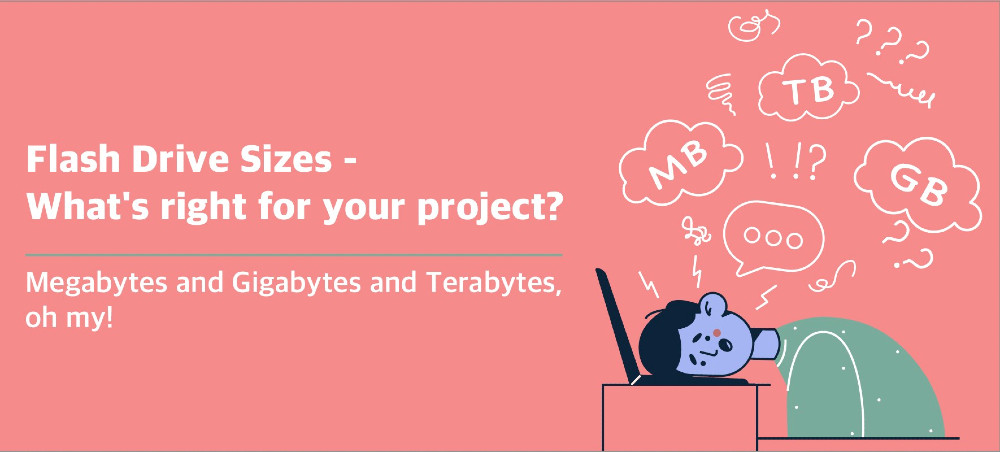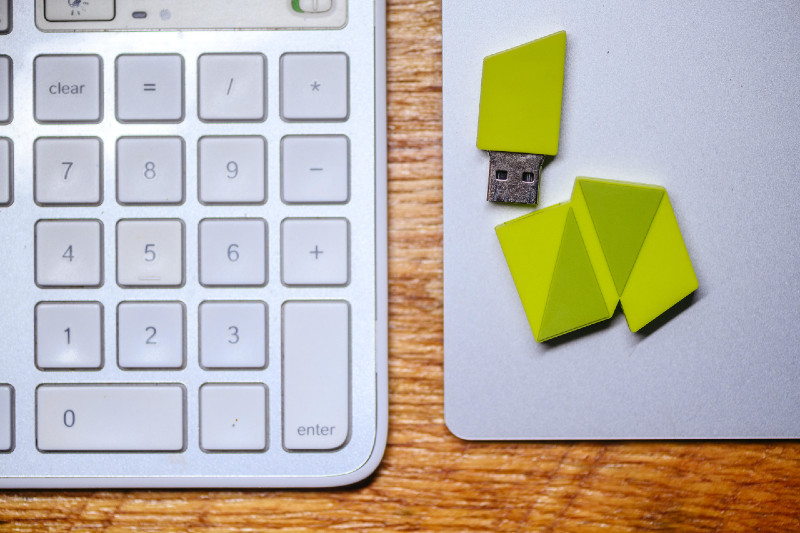
Flash Drive Sizes: How to Find the Correct Size You Need
USB flash drives are an excellent tool for storing digital data in a portable, reliable way. These ultra-compact devices -- some of which measure just a few millimeters in size -- can hold a ton of digital data, allowing you to quickly store and transfer files anytime, anywhere. But how much storage space, exactly, is on a flash drive? And how much stuff can each one hold? In this guide, we'll cover the basics of flash drive sizes to help ensure that you get the right one whether you're ordering custom USB drives or just shopping for some extra storage.
How Flash Drives Are Sized
To understand flash drive sizes, we first have to understand the measurements of digital data. Typically, we measure the size of digital information in bytes. The more bytes on your flash drive, the more room you'll have to store digital data, including photos, videos, documents, songs, and more. Because bytes are such a small unit of measurement it's common for modern data storage devices to reference their size in megabytes or gigabytes. Here's a breakdown of what these sizes mean.
- Megabyte (MB) -- One megabyte is equal to one million bytes of information. Flash drives come in various different sizes, often containing 64, 128, 256, or 512 MB each. For reference, a high-resolution JPEG image file might range in size from .5 to 5 megabytes each, so knowing how big your files are is crucial to determining how big or small to go with your flash drive.
- Gigabyte (GB) -- One gigabyte is equal to one billion bytes of information or one thousand megabytes. There are 1,000 megabytes in a single gigabyte, meaning a flash drive with a GB or more of storage space can hold a lot more digital data than even the higher-numbered MB drives. GB flash drives come in a wide range of increments, from one to several hundred. These are all great options for people and businesses working with photos and video. For reference, you can fit about 277 high-definition images and 2 to 4 minutes of high-resolution video on a single gigabyte of storage space.
- Terabyte (TB) -- One terabyte is equal to one trillion bytes of information or 1,000 gigabytes, making it the largest unit on this list. Typically, you'll see terabytes reserved for hard drives and memory cards geared towards professionals, since they tend to be a lot more expensive. A 1 TB memory card, for example, can cost up to $300.
With this information in mind, it's important to note again that a bigger number doesn't always mean more storage. You will be able to hold many more files on a 1 GB flash drive than a 512 MB flash drive (which is only equal to about a half of a gigabyte), so make sure you're paying attention to the unit of measurement when purchasing flash drives.
Determining Which Size You Need
Determining which flash drive size you need comes down to figuring out the size of the data you need to store. For example, if you're a photographer, you'll want to know the average size of each image you plan to store on the flash drive. If each image is only about 1 MB and you want to store a batch of 60 photos on each flash drive, you'll want to make sure you get a drive that's at least 64 MB. If you work with much larger videos, you will want to make sure you have plenty of room for bulkier media.
So is bigger always better? The answer is no. This is because larger capacity flash drives and other storage solutions cost more than smaller capacity ones, so you don't want to spend money on space you aren't going to use. If you're using flash drives as a promotional item or to hand off a few files to clients, smaller options will certainly do the trick and save you some money along the way.
In short, the flash drive size you choose should depend entirely on what you plan to store on it. For just a few photos and smaller files, you can get away with a 64 or 128 MB card. For sharing large quantities of high-definition photos, we always recommend the higher end of the MB offerings (256 or 512 MB) or 1 GB+. If you want to store and transfer high-resolution videos, we recommend starting with at least 1 GB.

We're Here to Help
USB Memory Direct is your go-to resource for bulk flash drives for your business. Regardless of if you need something small to hand out as an advertising item or a drive packed with storage space to back up your most important files, we can help pair you with the perfect drive in a flash. We know things like storage and USB type can be confusing, so don't hesitate to reach out to us if you have specific questions.